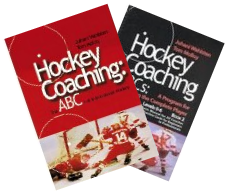I think your presumptions would be correct, based on Bob's description.
Work face-offs in wherever you see fit (do the majority of face-off training off ice using walk through's so as to maximize ice time for those things that must be done on ice; like skills. Perhaps work on 'taking face-offs' for your centres - the actual dropping of the puck and resulting battle on ice and have the wingers practice this skill too.)
Overall, I would keep it as simple as possible for 12 year olds. "Less is more".
Don't get too structured.
Teach principles of play, not patterns.
By this I mean you can help guide them into learning the 'reads' to help make correct decisions.
IE: 'PRESSURE' when...
1. you have support;
2. the player has their head down;
3. the player doesn't have good puck control;
4. the player shows you their back ("numbers");
5. the game situation (score / time) dictate it.
Reverse these 'reads' for 'CONTAIN'.
What other 'reads' can you help you players learn... and then can you construct measurable, game-like activities / accountable games to put them into these situations so they can struggle and emerge?... all the while letting them learn ("Shut up coach... I'm trying to play here!"... only giving them feedback while they wait in line / on the bench / during a break where YOU ask THEM what worked and what didn't and guide them toward the vocalizing the 'reads' themselves - not 'telling them' directly (or telling them as little as possible - guide first; tell as a last resort?
It's a big challenge, but if you can do this... now you are truly coaching Tim (not 'dictating')!
Good luck and keep asking questions!
Tim here is what I do.
In the first few weeks I put all of the team play in place. We usually have 75 minute practices so I use about 30 minutes every time to introduce offensive and defensive team play. 45 minutes on skating and skills to develop the tools along with the 'Toolbox'.
- the forecheck in each zone.
- back check
- defensive zone coverage.
- break out
- penalty killing
- power play
After these Big Ideas are in place we work on the details the rest of the year.
I have used this comparison before.
It is like loading a truck.
- First you put in the big rocks - team play
- Next you put in the gravel that seeps between the big rocks - things like face-offs, support.
- Lastly you pour in the sand that filters throught the boulders and the gravel - details like angles, stick on the puck, pass and go etc.
Your team needs a basic structure. Mine are built on the idea of playing Total Hockey reading where you are 1-2-3-4-5 and in which zone, which situation (loose puck, offense, defense) and in what role (puck carrier, offensive support, checking puck carrier of covering away from the puck)
There is a lot to cover but I think it important that you have a structure (like the steel frame of a building) at the start and then build the walls.
It is important to have 'Clarity' about Why you are doing the drills and games.
To accomplish this our practices always consist of at least 50-75% games, transition games, tournaments and contests.






In one of Bob Murdoch's videos, he breaks down the game of hockey as follows:
1. Defense
2. Breakout
3. Offense/Attack
4. Scoring chance
5. Forecheck
If I understood him correctly in the video, he actually recommends teaching the game in this manner. My question is, where is the best place to add the teaching of special teams play, i.e. face-offs, PP & PK?
I suppose PK makes sense to be taught with Defense and PP with Offense. What seems to work best, again with younger (U12) players?